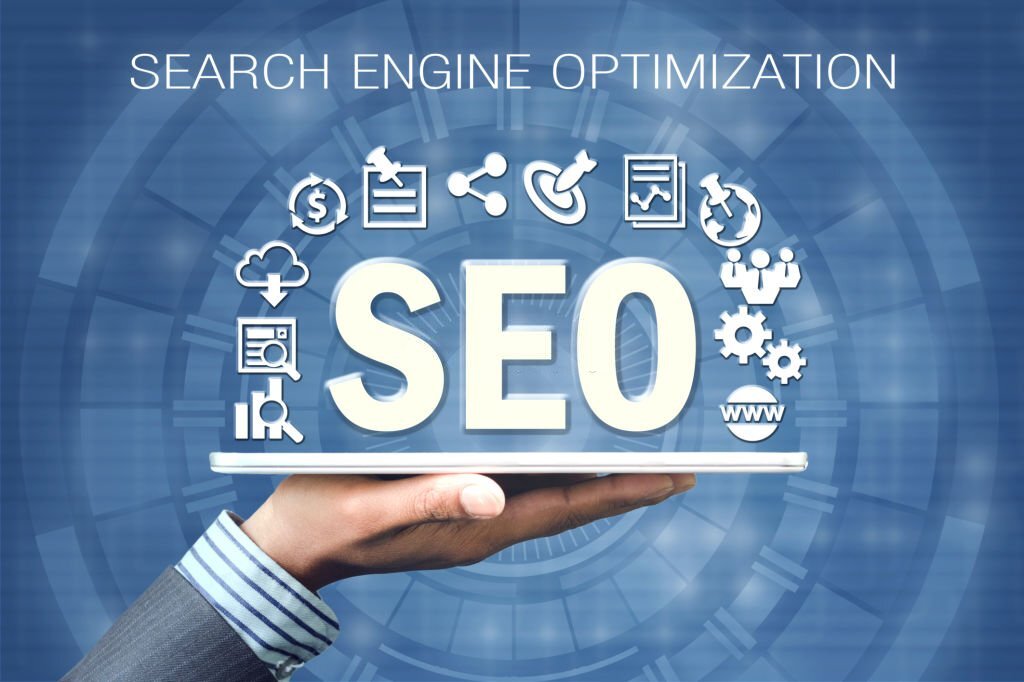There are approximately 30 million small businesses in the U.S alone. Only 40% of those small businesses are profitable… Only 33% of them will make it to their 10th year. If you don’t know what growth marketing is, we wrote this guide to get you up to speed on the topic and pass on the techniques that many companies are using to fly past all these small business statistics and build successful companies; some of them making their first million in under a year.
This article will tell you all about growth marketing, a little bit about the history of growth marketing and SEO, and then outline the advantages that you are working with when you choose Lean Summits as your growth marketing agency. This is how we win for our clients.
Introduction: What Is Growth Marketing?
Growth marketing, also referred to as agile marketing, growth hacking, or marketing 2.0, is somewhat based on the traditional marketing model, but with some high-level techniques incorporated like search engine optimization, articles that add value for prospects, email marketing campaigns, creative copy advertisements, A/B testing, and of course, the recording of key metrics to analyze and fine-tune an effective and sustainable growth strategy.
The goal of a growth marketing company is to come up with the perfect plan for your business, and then measure and use the insights gained through technical analysis to fine-tune your growth marketing strategy into a mechanism built on user experience that drives sustainable growth.
Growth marketers have a wealth of foundation of fundamental knowledge, and a sound understanding of how to get their product in front of all the right people, and then decide what to say at all the right times to drive action.
The Advantages of Growth Marketing

The main focus of growth marketing is to find new and innovative ways to attract and engage potential customers while building authority and credibility, and encouraging long-term relationships. Growth marketing starts out by identifying your target audience, and then they break it down into smaller niches to better understand your ideal prospects and then attract and connect with them through data-driven content.
Growth marketing teams find out who your prospects are, where they spend their time online, what their day-to-day problems are, what motivates them, etc., and then they figure out where to focus their efforts to get your campaign the most traction. Growth marketers are always hustling. They are focused on one main goal.— Getting and keeping customers!
Here are some of the main advantages of growth marketing:
- Improves SEO – SEO is one of the most cost-effective and longest-lasting forms of digital marketing. When you have your site’s pages and blogs optimized for search engines to find and rank them, everything— your rankings, your site performance, crawlability, visibility— every important aspect of your online presence and the metrics associated with it starts improving almost instantly.
- Increase Search Engine Rankings – Optimizing your website pages for SEO also allows you to rank higher in search engine result pages (SERPs) for the keywords that matter the most to your brand and your ideal prospects.
- Increases Online Visibility – Along with ranking higher in search engine results pages comes more people seeing your website in searches, so your visibility will start going crazy once your site’s pages can fully communicate what your content is about with web crawlers.
- Bring in More Traffic – Growth marketing almost instantly begins to improve the quality and quantity of your traffic because there will be more people with their eyes on your product or service.
- Uses Proven Methods and New and Existing Technologies – A growth marketing team’s main objective is to keep costs low and get the best traction possible for your campaign. This often involves implementing new or existing technologies to automate repetitive tasks and keep labour costs at a minimum.
- Improves User Engagement – Growth marketing uses SEO to target keyword placements that contain phrases that your target audience will be looking for online, allowing you to connect with them and help them with real-life problems right when they’re searching for a solution. This sends your engagement through the roof because it makes people appreciate what you’re doing for them.
- Encourages Repeat Visits – When you’re using search engine optimization to target your ideal prospects, you can use your expertise to help them with real day-to-day problems they might be facing. This makes you a memorable brand and encourages repeat visits.— The kind that harbour long-lasting relationships
- Increases Conversions – If you sell products, when your quality and quantity of traffic improve, your conversions will automatically reflect that.
- Improves Website Performance – Your website pages are SEO optimized, and your website will perform better. Having internal links going from your content to pages and blogs that are related to or referencing one another, will make your website more engaging for visitors, and your website has a better structure making it easy for web crawlers to crawl and easy and inviting to navigate for visitors
- Builds Trust and Credibility with Potential Customers – When you start publishing pages and blogs that contain useful, valuable content optimized for search engine results pages, you start to build trust and credibility with potential customers. Eventually, all of your areas of expertise and all of the topics that you write about will turn your industry know-how into thought leadership and authority, and trust comes with that. The kind of trust that prospects need to buy from you.
The History of SEO
The history of SEO goes back about 30 years, showing a dynamic evolutionary rhythm that has changed and evolved each year since it started. Over the last three decades, SEO has evolved forcing content creators to create content that is more and more user-centric.
Let’s look at the history of SEO by major changes that affect the ranking of websites:
What started search engine optimization was not just the development of the internet and the appearance of the first web pages online. It was the onslaught of new web pages being published online afterward as it gained popularity that came with a handful of new search engines being created for users to search the contents of the web for what they wanted to read. The onslaught of new web pages, new search engines, and people trying to manipulate rankings quickly created the need for new classification systems and new ways to search for content.
Here are some of the first-ever search engines and the year they were introduced:
- ArchiText – 1993
- Wandex – 1993
- Aliweb – 1993
- World Wide Web Worm – 1993
- RBSC Spider – 1993
- JumpStation – 1993
- Yahoo – 1994
- AltaVista – 1994
- Lycos – 1994
- Infoseek – 1994
- Excite – 1995
- AskJeeves – 1997
- Google – 1998
The History of SEO – The Introduction of PageRank
In 1998 when Google was first published, Sergei Brin and Lawrence Page, the inventors of Google published a piece entitled, “The Anatomy of Large Scale Hypertextual Web Search Engine.” This paper was published as a part of their research project for their Stanford University studies.
The project referenced a predominant business model for commercial search engines and claimed that the goals of the advertising business model do not always correspond to providing quality search results to users. A lot of people saw this as a turning point in SEO history because Google went on to discuss PageRank; a new technology that they employed to judge how relevant web pages are to search queries and then rank them.
At this point in the history of SEO, there were only three ranking factors accounting for the positioning of websites on the internet.
1. The Number of Visits The Website Receives
2. The Number of Keywords on a Website
3. The Number of Backlinks to a Websites
The optimization of websites for search engines started in the mid-1990s, as these first search engines began to catalogue pages on the internet and rank them. At first, the search engine crawlers, also referred to as spiders would crawl webpages one at a time, downloading each page and storing it on the search engine’s server, where a second program would extract information about the page, analyse the words it contained and where they were located, and then give weight to specific words to identify the nature of the content better and make a note of all links going to other sites on the page.
Website owners soon became savvy about the value of ranking web pages in search engine results pages. (SERPs) This opened the doors for people that practised white hat, and, unfortunately, black hat SEO to start deliberately ranking their content in SERPs. This is when search engines were forced to start getting crafty with their search engine ranking algorithms.
Major Ranking Algorithm Updates
When Google first started, off-page factors such as page rank or link analysis were considered in ranking websites as well as on-page factors like keyword frequency, headings, meta-tags, site structure, etc. They did this to make it a little bit more difficult to manipulate their ranking algorithms, but eventually, even though the algorithm was tougher to manipulate, people still found ways around it and still managed to manipulate rankings.
By 2004, search engines were very hush-hush about changes to their algorithms, incorporating a wide range of undisclosed factors in their algorithms to reduce manipulation attempts and keep their readers and website visitors with the best possible search results.
Here is a timeline of the major ranking algorithm updates in the history of SEO:
In 2005, Google started to personalize search results for each user, delivering special-made results for each user based on their search history.
In 2007, Google began a campaign against paid backlinks that transferred page rank.
In 2009 Google followed up with the introduction of the Nofollow attribute on links. Matt Cutts, one of the software engineers at Google at that time announced that the Google bot would no longer give weight to Nofollow links to prevent people from using Nofollow links to manipulate algorithms.
In 2010, a new indexing system named Google Caffeine was announced. The new indexing system would allow users to find news results, forum posts, and other content types much sooner after publishing than once before. Google Instant followed in late 2010 offering even more timely and relevant results with a real-time indexing system.
In 2011, Google announced the Panda update. The panda update penalizes people that have duplicate content on their site from other websites and sources. As a result, websites that were using duplicate content to rank higher in search results began to be punished and taken out of search engine results pages altogether.
In 2012, Google announced the Penguin update, in an attempt to discover websites that use manipulative techniques to improve search engine rankings.
In 2013, Google announced the Hummingbird update that addressed Google’s natural language processing and semantic understanding of the content on web pages, mainly dealing with conversational search where the system would pay more attention to each word in the query to better match pages with the meaning of the search query then just a few words together.
In 2014, the Google Pigeon update was announced addressing local search algorithm updates in an attempt to increase the ranking of local listings in search results.
In 2015, Google was reportedly developing and promoting mobile search as one of its products. When people caught wind of that, a lot of them started to take a different approach to their marketing strategies to better present pages for mobile accessibility.
In 2019, Google announced that they would start incorporating BERT, which stands for “Bidirectional Encoder Representations from Transformers” in an attempt to improve their natural language processing and better understand the search queries of their loyal patrons.
The History of Growth Marketing
2010 – Sean Ellis, the founder of GrowthHackers.com, coined the term “growth hacker” in a blog post when he defined a growth hacker as “a person whose true north is growth. Everything they do is scrutinized by its potential impact on scalable growth.”
The term was redefined by Andrew Chen, the author of literally hundreds of essays that have been featured and quoted on popular websites like The New York Times, Fortune, Wired, and WSJ shortly after to a wider audience in a blog post he published entitled, “Growth Hacker is the new VP Marketing.”
In his article, he redefined the term and used Airbnb’s integration with Craigslist as an example. He wrote that growth hackers “are a hybrid of marketer and coder, one who looks at the traditional question of ‘How do I get customers for my product?’ and answers with A/B tests, landing pages, viral factor, email deliverability, and Open Graph.”
2013 – The second annual (2013) “Growth Hackers Conference” held in San Francisco and orchestrated by Gagan Biyani featured growth hackers from LinkedIn, Twitter, and YouTube, just to name a few.
2015 – Sean Ellis and Everette Taylor founded GrowthHackers – the most prominent website community of growth hackers and now host the annual GrowthHackers Conference.
Mark Zuckerberg used the growth hacking mindset while growing Facebook, and countless other companies over the last decade have fine-tuned and added to the techniques that have evolved into growth marketing as we know it today.
How Growth Marketing is Different from SEO
When you hear someone talking about SEO online, on podcasts, videos, etc., 9 times out of 10, they are referring to on-page SEO. On-page SEO refers to a set of practices that influence the organic positioning of your website’s pages and blogs in organic search engine results pages. On-Page SEO includes optimizing content with proper formatting, placing targeted keywords in anchors, alt tags, meta titles and descriptions, etc., to ensure that your pages’ content is telling Google exactly what they are about.
The main goal of SEO is to drive high-quality targeted traffic to your website. But if you want the whole spill, there are technically three different areas of SEO, and they each have their unique characteristics.
Three Types of SEO:

On-Page SEO – As previously stated, On-page SEO involves carrying out a set of techniques to optimize website content so that it sends the right signals about your content to search engine ranking algorithms when the search engine crawlers crawl your site.
Technical SEO – Technical SEO involves another set of techniques that improve the performance, provability, accessibility, and usability of your website from a technical standpoint. 404 pages, redirects, broken links, internal linking to other pages that are relevant to each other, link placement in menus and footer sections, page speed, errors with loading and load time issues, are all examples of things that you would look for if you wanted to optimize a website for technical SEO.
Off-Page SEO – Off-page SEO refers to the implementation of steps taken outside of the website in other places on the internet with the intent to increase rankings in search engine results pages (SERPs) and build online presence and authority.
Off-site optimization involves improving search engines and internet users’ perception of a site’s relevance, popularity, trustworthiness, and authority through outreach, link placements, and more.
Local citations, backlinks from other websites or platforms, guest posting or outreach to attain link placements, link acquisitions, etc., are all examples of off-page optimization techniques.
How Growth Marketing is Different from SEO:
Growth marketing is similar to SEO because they both focus on rapid growth. The difference between SEO and growth marketing is that SEO’s primary focus is on increasing organic traffic and optimizing user experience through content and link acquisition. Growth marketing primarily focuses on leveraging KPIs and AB testing to identify and refine strategies that lead to improved customer journeys; modifying or abandoning the ones that do not.
Growth marketing is also distinctively different from SEO because it often involves a multi-talented team of marketers, developers, engineers, and product managers who all work together to focus on engaging users with the intent to meet or surpass business goals.
Successful Growth Marketing Examples
Airbnb
Airbnb started with just two men that couldn’t afford to pay their rent and decided to lease their loft out as a crash pad for travellers. They charged $80 per person for an airbed and a hot breakfast for their guests, which was fairly easy to sell considering most hotels cost that much anyway and usually minus the breakfast.
No one could have guessed at that point that Airbnb was about to take over the travel niche with some of the most effective growth marketing strategies ever applied. In just 6 short years, Airbnb had grown into a 10 billion dollar business with more than 10 million guests and 550,000 rental properties globally.
Growth Marketing Strategies Used:
Funding and Venture Capital: Founders Joe Gebbia and Brian Chesky sold homemade novelty election-themed breakfast cereal during the summer of 2008 for $40 a box. They managed to raise $30k to get their Airbed & Breakfast startup off the ground. Gebbia and Chesky obtained $20k through Y Combinator before rebranding as Airbnb and securing an additional $600k from Y Ventures and Sequoia Capital.
Craigslist Hacks: Airbnb came up with a growth hack to automatically place listings on Craigslist for their customers – without getting any approval from Craigslist. In need of new customers in their first stages of business, Airbnb implemented a spam email bot to contact users from Craigslist by introducing them to Airbnb every time a user listed their property on Craigslist. The bot impersonated a “young lady” who “really liked their property” and suggested they look at Airbnb.
Product Design: Gebbia and Chesky are designers at heart and their dedication to building the best possible experiences for users has been an essential differentiating factor for both hosts and guests. Airbnb experience makes it easy for hosts to list their properties and even easier for people to book one. Airbnb has gone as far as offering host professional photographs to show properties in the best light possible.
Market Disruption: While marketing their service in France, Airbnb figured out that physically sending teams of 2-3 people to their location to throw a party and promote the platform was 5x cheaper than digital channels alone. Airbnb continues to be one of the biggest market leaders in travel to this day.
Square
Card payments have been taking the place of cash in all major markets around the world because it’s just more convenient. Card payment solutions come with their transaction fees, and their own approval policies, and they are generally less reliable than cash.
With the number of small businesses increasing every year, the mid-2000s brought with it the problem of a lack of digital payment solutions for small businesses. This created another big issue; the adoption of card payments in the retail sector was putting a dent in their revenue.
Twitter CEO Jack Dorsey saw an opportunity to solve this problem. He launched Square to help all of the people in the payments industry who were being forced to not accept card payments because of the high transaction fees, expensive hardware, and risk that came with them.
With simple, manageable transaction fees, now small businesses could offer card payments to their customers. Jack’s all-in-one POS and card machine system was easy to install and came with everything small businesses needed to start taking card payments.
Growth Marketing Strategies Used:
Solving an Ongoing Problem: Companies were more abundant than ever due to the ease of creating a presence online. Jack was able to identify a lack of payment solutions that was standing in the way of them keeping their products and services accessible to everyone, making them lose out on valuable extra revenue they could have been making. Square came up with a simple, affordable payment solution for small businesses that were losing out on revenue due to high fees and a lack of options.
Using Key Players and Influence Having Twitter’s CEO Jack Dorsey helped Square capture interest and funding at crucial stages of growth, opening doors and making everything fall right into place for them.
Disruptive Marketing: With businesses with low transaction rates and turnovers just waiting for a solution that allowed them to accept online card transactions, Square quickly became one of the smartest investment choices its clients could make.
UX-Focused Product Design: A lot of Square’s success can be contributed to the excellent product design behind its software and hardware, allowing the company to fend off competition by providing better quality. Complexity was a big problem until Square came up with simple software and hardware solution for businesses
The positive response from all of Square’s clients quickly turned into a fandom, driving growth in a huge niche with relatively no competition. Dorsey’s celebrity status helped Square by getting them coverage in major press publications while they outsourced their marketing and enjoyed growth at a staggering rate of 632% by Q2 2015. Square is currently one of the biggest giants in the global payment industry today.
How Our Growth Marketing Team Can Help Your Business
When you hire LSS to handle your growth marketing, you’re hiring a highly skilled and multi-talented team of brilliant marketers with years of experience delivering on-the-mark growth marketing strategies for small businesses and startups.
Our team has the experience and ability to quickly respond to changes, key market and industry insights, and campaign metrics, allowing our clients to avoid many of the common pitfalls experienced by small businesses in their first stages of growth. Our approach is different because we don’t just focus on growth.
We combine human interaction and technology until we have a system that works, and then we fine-tune it until we’ve anchored your success and positioned you amongst competitors— and then we’ve just begun. Because of our experience with growth marketing and our successes across multiple industries, we select and execute programs, integrations, and automation that have the highest potential of success for your company, and then we make sure that they deliver.
With LSS as your growth marketing team, you will be able to identify opportunities to automate current processes that are eating into your ability to expand, ensuring that nothing jeopardizes your quality of service— and without incurring additional labour costs. Our team uses available technologies and develops new ones as needed to streamline your success because we are already in the business and we know what works.
Here are some benefits of hiring Lean Summits as your growth marketing team:
- Experienced Multi-talented Team
- Increased Visibility
- Increased Awareness
- Acquisition and Retention of Customers
- Authority and Trust Building
- Gain a Competitive Advantage
- Lock-In Future Revenue and Sustainable Growth
Conclusion: Growth Marketing is the Future of Online Marketing
Growth Marketing is a fairly new, high-demanded strategy focused on rapid and sustainable company growth in a short period. It includes the implementation of multiple digital marketing techniques at the lowest possible expense without sacrificing the quality of customer service. When called for, growth marketing involves the incorporating of new and existing technologies to automate repetitive processes, the constant testing of variables, and reworking and moulding a customized strategy model for your business.
The fact that growth marketing focuses on marketing ROI and efficiency, added to the constant improvement of marketing processes to ensure ongoing and sustainable growth makes growth marketing the best marketing strategy that you could implement for your business, and a lot of marketers agree that it’s quite possibly the future of online marketing.
If you are interested in growth marketing for your small business or startup, our team here at Lean Summit would love to speak with you about your project!



